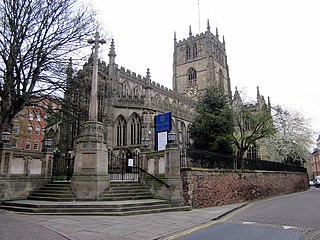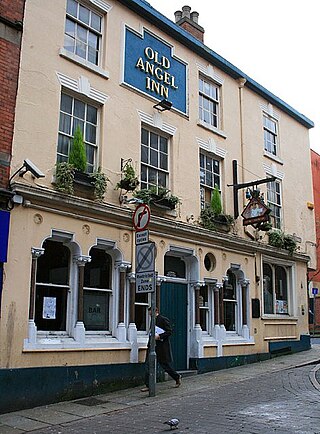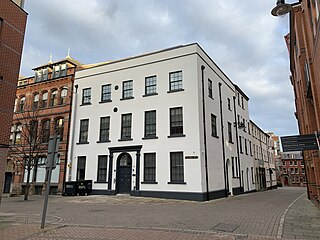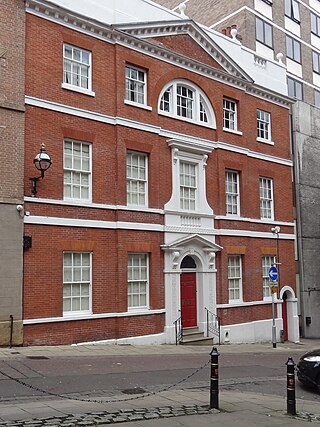
The Park Estate is a private residential housing estate to the west of Nottingham city centre, England. It is noted for its Victorian architecture, although many of the houses have been altered, extended or converted into flats. The estate uses gas street lighting, which is believed to be one of the largest networks in Europe.

The Arboretum is a city park in Nottingham, England.

Swinderby railway station serves the villages of Swinderby, North Scarle, Eagle and Morton Hall in Lincolnshire, England. The station is 8.75 miles (14 km) south west of Lincoln Central on the Nottingham to Lincoln Central Line, owned by Network Rail and managed by East Midlands Railway who provide all services.

Lowdham railway station is a Grade II listed railway station which serves the village of Lowdham in Nottinghamshire, England.
The University of Nottingham operates from four campuses in Nottinghamshire and from two overseas campuses, one in Ningbo, China and the other in Semenyih, Malaysia. The Ningbo campus was officially opened on 23 February 2005 by the then British Deputy Prime Minister, John Prescott, in the presence of Chinese education minister Zhou Ji and State Counsellor Chen Zhili. The Malaysia campus was the first purpose-built UK university campus in a foreign country and was officially opened by Najib Tun Razak on 26 September 2005. Najib Tun Razak, as well as being a Nottingham alumnus, was Deputy Prime Minister of Malaysia at the time and has since become Prime Minister of Malaysia.

St. Giles' Church, West Bridgford is an Anglican parish church in West Bridgford, Nottinghamshire.

High Pavement is a street in Nottingham in Nottinghamshire, England. It is one of the earliest streets in the city, and most of its buildings are listed.

The County War Memorial, Nottingham is a Grade II listed structure in Nottingham in Nottinghamshire, England.

Albert Nelson Bromley was an English architect based in Nottingham.

The Cock and Hoop is a Grade II listed public house in the Lace Market, Nottingham.

The Old Angel Inn is a Grade II listed public house in the Lace Market, Nottingham.

Castle Gate is an historic street near the centre of the English city of Nottingham. The street runs uphill, from a junction with Low Pavement, Lister Gate and Albert Street in the city centre, to Castle Road, near to the entrance to Nottingham Castle. The street is noted for its Georgian houses, many of which are listed buildings. There is also a complex of rock-cut caves, under buildings at the lower end of the street, which is a scheduled monument.

St Mary’s Gate is a historic street in the Lace Market area of Nottingham City Centre between High Pavement and Warser Gate.

Charles Leighfield Jonah Doman FRBS was a sculptor from Nottingham.

Wheeler Gate is a street in Nottingham City Centre between Old Market Square and St Peter’s Square.

Amesbury Abbey is a Grade I listed mansion in Amesbury, Wiltshire, England, built in the 1830s for Sir Edmund Antrobus to designs of Thomas Hopper. The house, which stands in Grade II* listed parkland, is now used as a care home. It takes its name from Amesbury Abbey, founded in about 979 on or near the same site.

Willoughby House is a Grade II* listed building on Low Pavement in Nottingham.

Sherwin House, a Grade II listed building on Pilcher Gate, is the oldest surviving town house in Nottingham.

Sheriff House is a Grade II* listed building on St James’ Street Nottingham.

19, Castle Gate, also known as Stanford House, is an 18th century Grade II* listed building on the corner of Castle Gate and Stanford Street, in the English city of Nottingham. It should not be confused with 6, Stanford Street, a 19th century grade II listed former warehouse, which is also known as Stanford House.





















